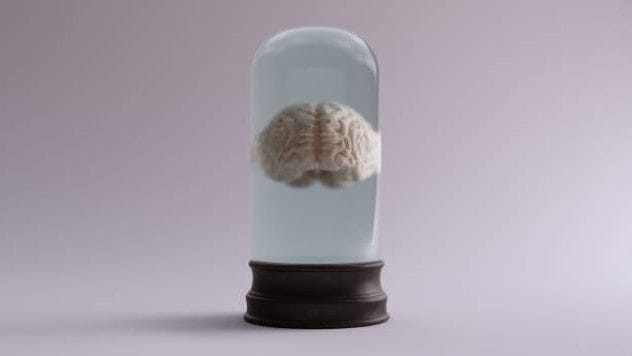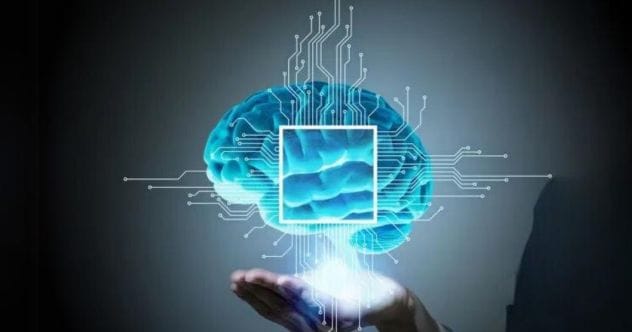The brain is truly amazing. So many complex processes happen inside our heads every day. Neuroscience is a constantly evolving field, with researchers learning more about the brain all the time. The human mind remains largely a mystery, but each new finding brings us closer to understanding it. Let’s explore some of the latest discoveries, from brain implants for OCD to VR for mice.
Scientists Keep a Pig’s Brain Alive Outside Its Body

Scientists at the University of Texas Southwestern Medical Center have invented a machine that can keep a pig’s brain alive even when it’s not inside the pig’s body. The machine uses a special pump to send blood to the brain. An algorithm monitors things like blood pressure and flow, making adjustments as needed.
So far, they’ve kept a pig’s brain alive for five hours with minimal change in activity. They hope this research will help us better understand how the brain works. According to Dr. Juan Pascual, one of the lead researchers, this method allows them to study the brain independently of the body, answering questions in a way that was never before possible.
Psychedelic Drugs Used to Treat Trauma in Veterans
Many soldiers come home with PTSD and traumatic brain injuries (TBIs). Treating these conditions can be difficult. But now, researchers at Stanford University have found a new way to treat trauma: psychedelic drugs.
The researchers studied ibogaine, a substance used by West African shamans. They discovered that a single dose of ibogaine significantly improved cognition, mood, and social functioning in veterans with TBIs.
The study involved 30 veterans with mild-to-moderate trauma. They participated in a five-day treatment program in Mexico, which included therapy, yoga, meditation, and ibogaine. After a month, 83% of the participants no longer had a diagnosable disability. These findings could lead to new forms of neuro-rehabilitation. Scientists are now exploring how much of the improvement was due to the drug and how much was due to other factors like therapy and wellness activities.
Tiny VR Goggles for Mouse Brain Research
Scientists at Northwestern University have created virtual reality goggles for mice. These tiny headsets allow researchers to gain deeper insights into how rodent brains work.
Previously, scientists used computer screens to simulate environments for mice. However, these screens were limited to 2D environments and didn’t fill the mouse’s entire field of vision. The new goggles overcome these limitations, opening new possibilities for neurobiological research.
The Northwestern team tested the headset by simulating a bird attack from above to study how rodent brains respond to threats in real time. They plan to simulate other scenarios in the future. According to John Issa, one of the headset’s developers, they hope to study predator-prey dynamics by watching brain activity while a mouse chases a fly, which involves depth perception and estimating distances.
Brain Implant Helps Treat OCD and Epilepsy
Amber Pearson suffered from severe OCD, causing her to worry about contamination so much that she would scrub her hands until they bled. Her obsessive fears and rituals could last up to nine hours a day. Pearson also had epilepsy.
A groundbreaking brain implant has changed her life. Scientists have used brain implants to treat OCD and epilepsy separately before. However, Pearson is the first person to receive a combined treatment for both conditions.
The implant uses electrical impulses to target the areas of the brain causing the issues, essentially stopping the intrusive thoughts. Now, Pearson’s rituals only take about half an hour, and her fear of eating in groups has disappeared. She says she’s now present in her daily life, which is incredible, because before, she was constantly stuck in her head worrying about compulsions.
New Discoveries about Alice in Wonderland Syndrome
Alice in Wonderland syndrome (AIWS) is a rare disorder that causes people to misjudge the size of objects. People with AIWS might feel like they’ve shrunk or grown, or that nearby objects are the wrong size. There are only about 170 known cases, and its origins remain a mystery.
A 2024 study could bring scientists closer to understanding ALWS. Researchers compared brain scans of people with AIWS to those of healthy individuals and people with other neuropsychiatric disorders. The scans showed that over 85% of the AIWS brains had lesions affecting the visual processing region and the region involved in judging size.
While the research is still in its early stages, scientists are hopeful that further investigation of these two areas could help unravel this unusual disorder.
Elon Musk’s Human Brain Implant
On January 29th, 2024, Elon Musk announced that his company Neuralink had implanted a chip into its first human brain.
Musk stated that the patient was “recovering well” and that the chip was picking up spikes of electrical activity caused by neurons firing in the brain.
Neuralink aims to create an implant that allows people to control devices with their minds. However, the project has faced criticism over animal cruelty accusations. In 2023, the PCRM reported severe harm caused during trials on macaques, and the Department of Transport fined Neuralink for mishandling hazardous chemicals.
Widespread Brain Scan Study Unearths ADHD Patterns
Researchers in the U.S. have discovered brain patterns associated with ADHD. The team examined the brain scans of 6,000 children and found that certain brain regions showed different behaviors and changes in blood flow in people with ADHD symptoms compared to those without.
These patterns were most evident in the networks active when the brain is resting and in the cingulo-opercular network, which involves attention and cognitive control.
These findings bring scientists closer to understanding ADHD and improving treatment. Early diagnosis of ADHD is crucial, as people diagnosed in adulthood are four times more likely to die early than the average adult, according to a 2015 study.
Could Changing Genes Help Fight Addiction?
Long-term alcohol abuse can change the pathways in your brain, altering your genes. A recent study found that substances like alcohol and drugs can change how genes are expressed in the brain, especially in regions linked to memory and reward responses.
These changes don’t have to be permanent. Medication and lifestyle changes can also alter genes in your brain. Mental health drugs, dietary changes, meditation, and exercise can affect DNA and brain function.
Understanding how alcohol affects our genes is key to developing new ways to fight addiction and help people regain control of their lives.
Marmoset Twins Swap Brain Cells
Marmoset twins swap brain cells during development. Researchers at Harvard found evidence of chimerism, where a body contains DNA from two separate sources.
When twin mammals are in the uterus, they share a circulatory system, allowing stem cells to pass from one twin to the other. Chimerism occurs across the animal kingdom, but marmosets are unique because they often give birth to non-identical twins or triplets. Up to 80% of a marmoset’s blood cells can originate from their twin.
Shared stem cells can become reproductive cells, meaning marmosets can carry egg and sperm cells from their siblings. Scientists have found evidence suggesting the swapping of brain cells, particularly microglia and macrophages, which are repair and regulation cells. Because this happens in monkey twins, it’s likely it also occurs in human twins.
Speech Recognition AI Made from Human Brain Cells
Scientists have developed a form of AI made of living human cells called Brainoware. While still limited, this AI shows the potential of neurotechnology.
Brainoware’s main achievement is speech recognition. The cell-based system identified one voice from audio clips of eight different people. Its accuracy doubled after two days of training, demonstrating adaptive and unsupervised learning.
Researchers at Indiana University Bloomington created Brainoware by growing brain organoids, which are small lumps of nerve cells. Each organoid is a few millimeters wide, takes two to three months to form, and contains up to 100 million nerve cells. The organoids are arranged on a microelectrode array.
While it’s still early days for Brainoware, this invention opens a new frontier in AI and neuroscience. According to Feng Guo, one of the lead researchers, this is just a proof-of-concept, and they have a long way to go.
Conclusion
From keeping pig brains alive outside their bodies to using psychedelics to treat trauma, the field of neuroscience continues to surprise and amaze. Discoveries like VR goggles for mice and AI made from human brain cells are pushing the boundaries of what’s possible. As we continue to unravel the mysteries of the brain, we open up new possibilities for treating diseases, enhancing our abilities, and understanding ourselves.
What do you think is the most fascinating discovery on this list? Leave your comment below!










